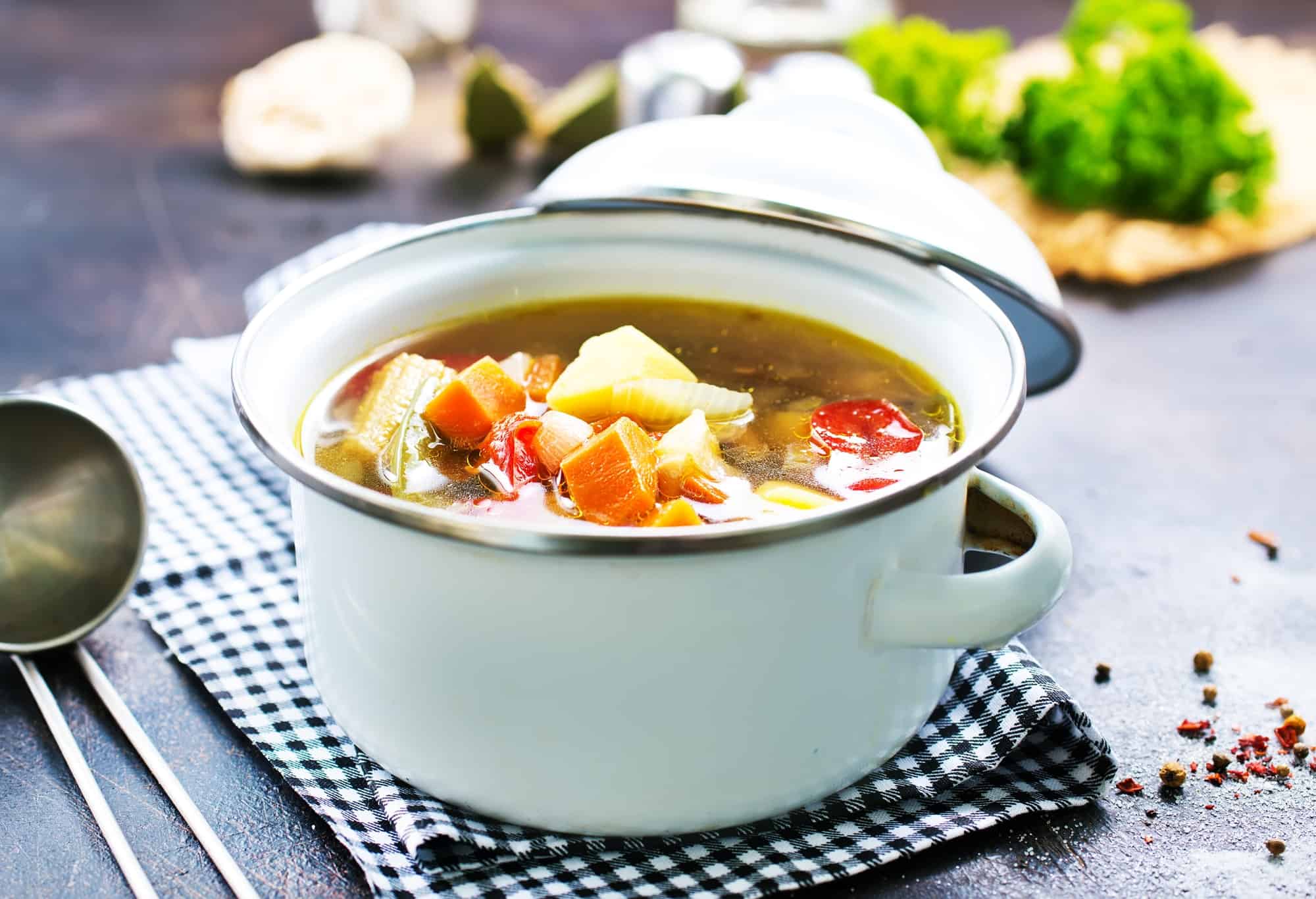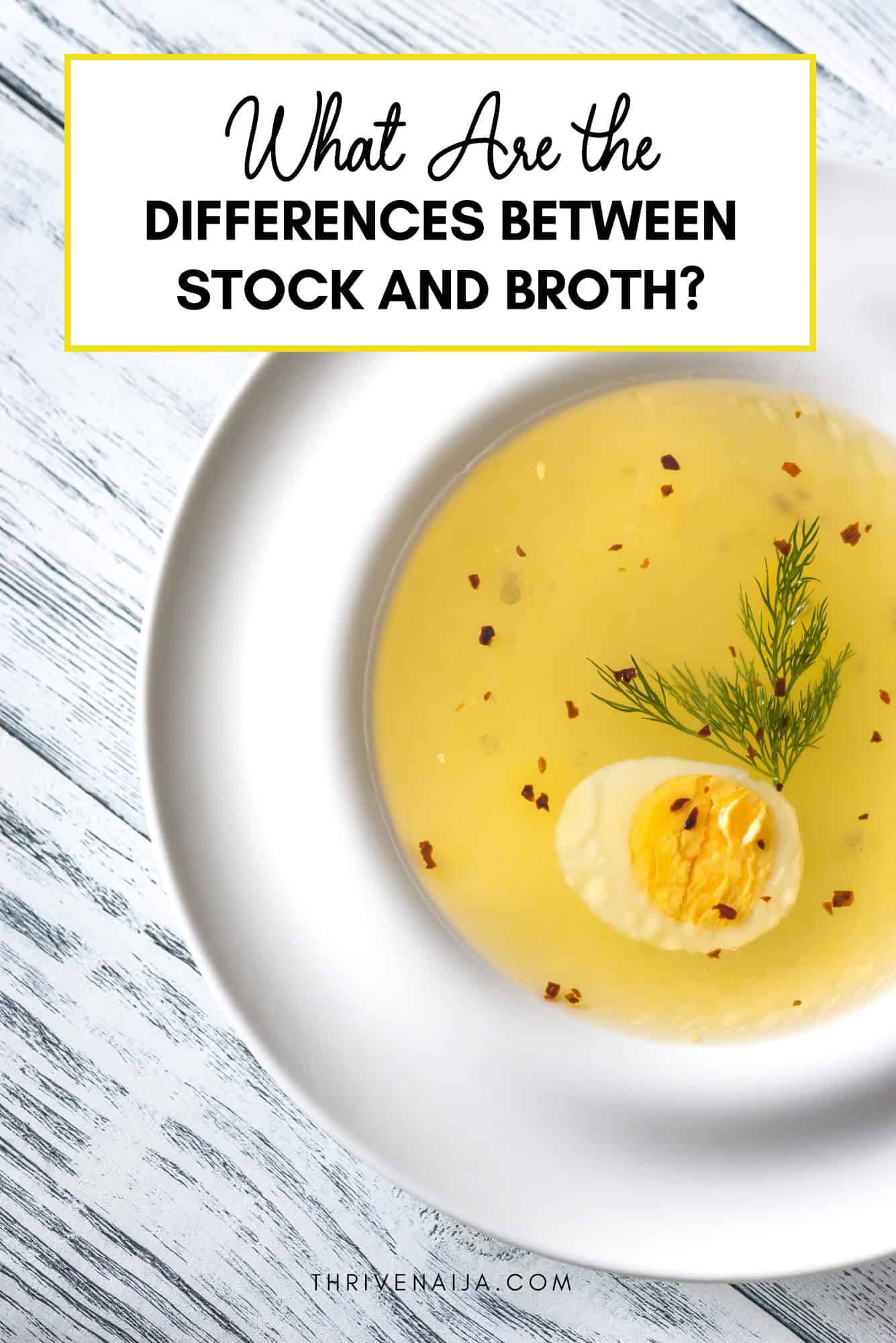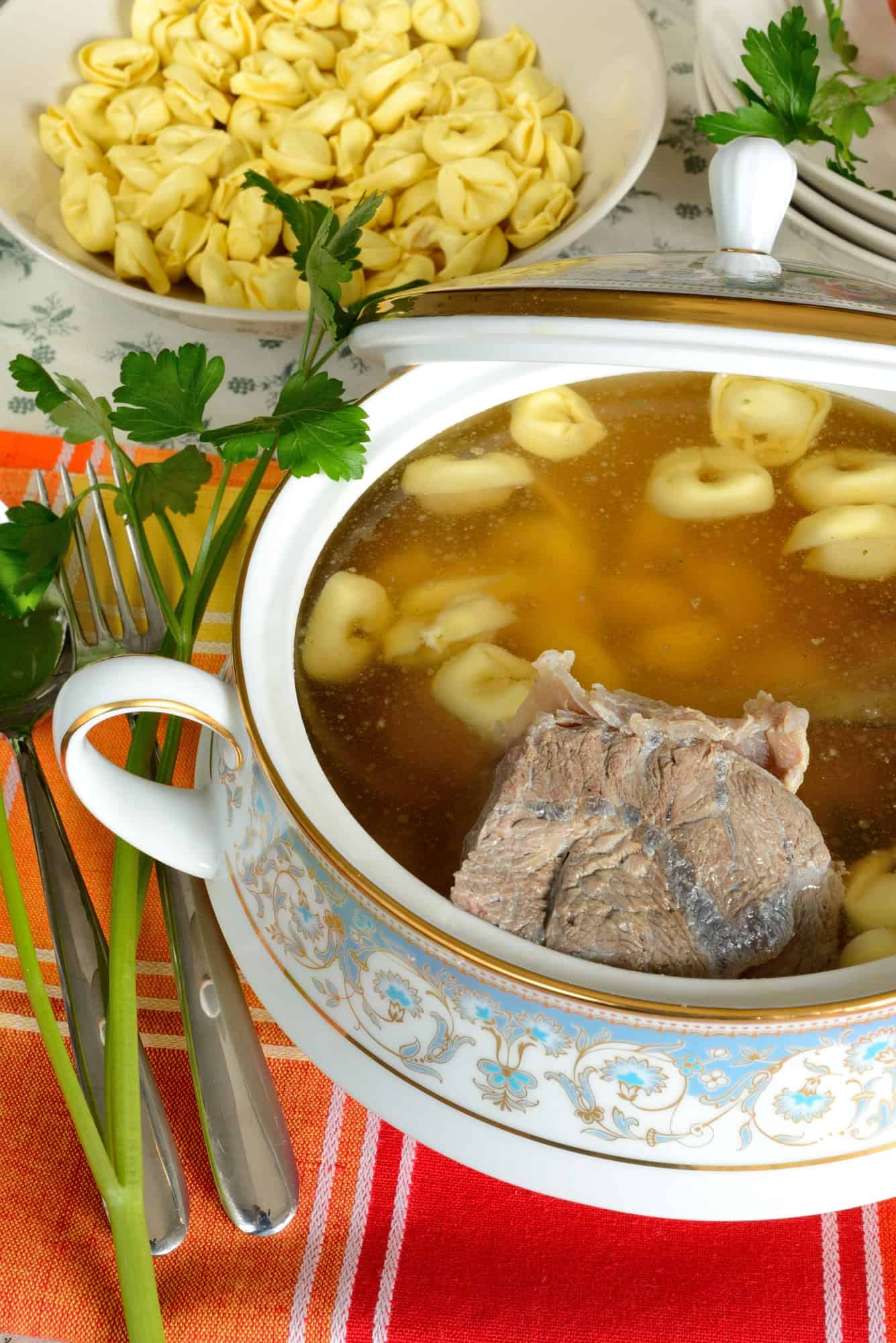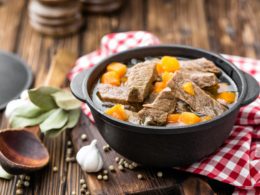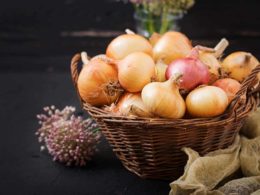What are the differences between stock and broth? We highlighted the differences, nutrition data, health benefits and also information on how to prepare and use each.
Often at times, these two are used interchangeably, to mean flavored liquids that are used to prepare soups and sauces or consumed on their own.
By the time you’re done reading this post, you’d have had knowledgeable insights on what makes stock and broth similar and the highlights.
What is Broth?
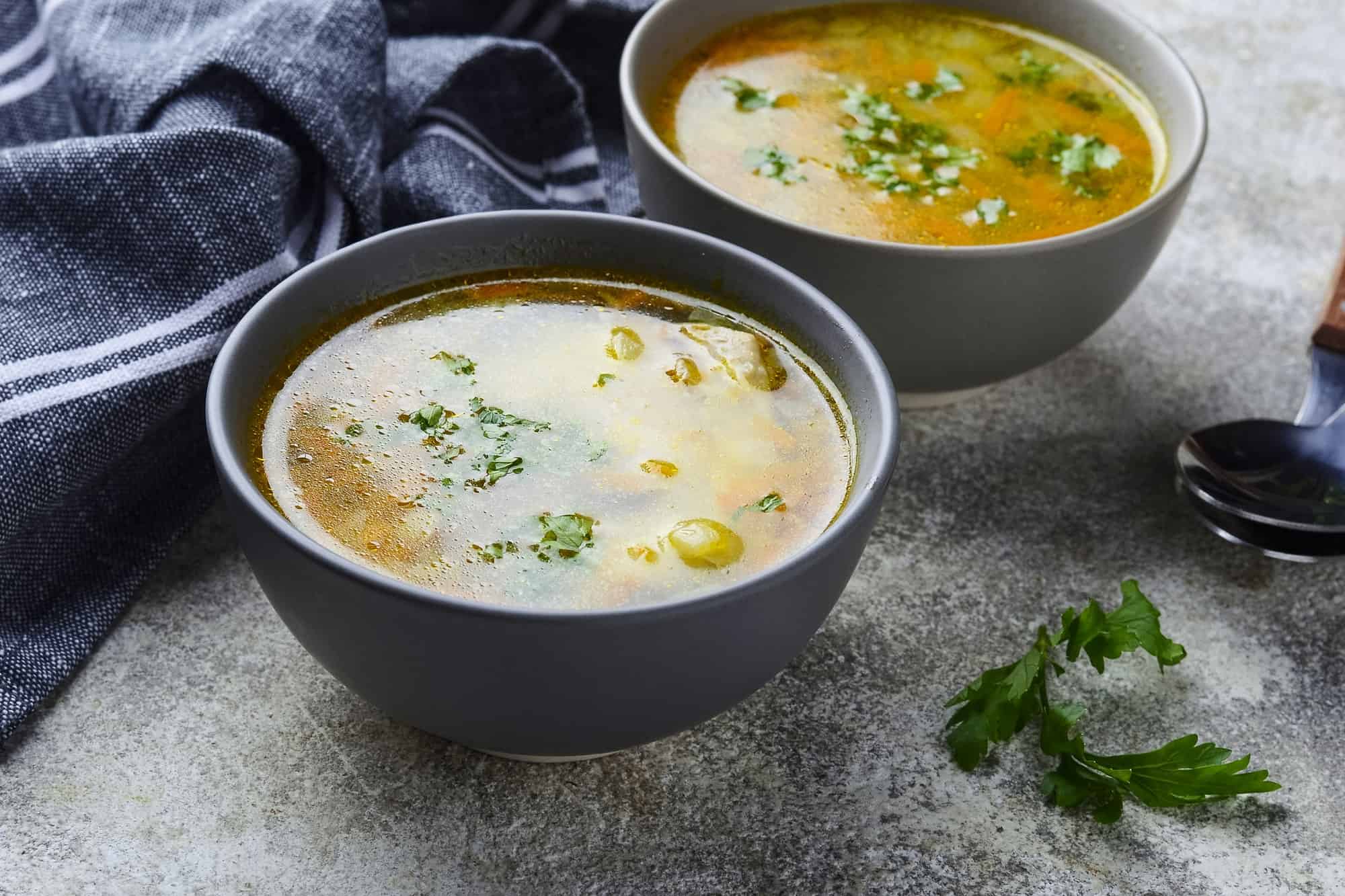
A broth is lighter and more flavorful and is traditionally made by simmering meat or fish in water, often with vegetables, herbs or even legumes. This seasoned liquid is used for a variety of culinary purposes.
However, in the past, the term “broth” was used exclusively to refer to meat-based flavored liquids. But in recent times, fish and vegetable broth is gaining a lot of popularity.
Furthermore, bone broth is also gaining extreme popularity and is prepared by simmering bones, vegetables and herbs in water for a time interval of 24 hours. It is worthy of note that bone broth is technically stock because it requires the addition of bones.
So in order to avoid any form of confusion, we will be referring to the bone broth as stock. Due to its rich flavor, broth can be used as a remedy for common cold or flu. Drinking warm steaming broth can serve as a home remedy to loosening up mucus when you have a stuffy nose. Chicken soup is even more effective in this regard.
In fact, drinking warm, steaming broth is an effective way to loosen up mucus when you have a stuffy nose. It is even more effective in the form of chicken soup (1).
The time it takes to cook broth is relatively short because the meat will become tough if you cook it for too long.
If you wish you can use the meat to prepare another recipe or chop and add back to the already prepared broth to create a chicken soup, for instance. Broth is more flavorful than water and thinner than stock and as such, it is most commonly used as a base for soups or as a cooking liquid.
What is Stock?
Stock is thicker and unlike broth, it is based on bones rather than meat.
Usually, it is made by boiling bones or cartilage in water for many hours to extract their gelatin and flavor. This gelatin makes stock thicker than broth.
Typically, you can prepare stock with many types of bones including beef, chicken, pork and even fish. Importantly, before you use the bone to make stock, rip them of all meat. A plain stock is left unseasoned.
However, if you want your stock to be flavorful, add meat, vegetables, and herbs. You can add onions, thyme, parsley, carrots and bones with meat left on.
This will give you a thick flavorful liquid just like broth. Your choice depends solely on how you will use it.
How are they used?
As mentioned earlier, these two are often used interchangeably, and it is very okay if you substitute stock for broth and vice versa.
Also, if you have a choice between broth and stock, use broth when a dish is based on the flavor of the liquid, such as broth-based soup.
On the other hand, you can use stock when the dish is richly flavored from other ingredients.
Which is Healthier? Stock or Broth?
Considering their health benefits, both stock and broth each have its own pros and cons.
Stock contains more calories than Broth does per cup (237 ml). One cup of chicken stock contains 86 calories while one cup of broth contains 38 calories (2). Stock also contains more carb, protein, and fat than broth as well as higher vitamins and minerals (3).
Due to its lower calorie content, broth may be a preferable option for those who are trying to limit their daily calorie intake. However, stocks contain more nutrients, as well as marrow, collagen, amino acids and minerals. These nutrients may help protect the digestive tract, support bone health and digestive tract (4, 5, 6).
Furthermore, adding herbs and vegetables to either broth or stock can increase the mineral and vitamin content and release beneficial plant compounds.
Oregano, thyme, and parsley are all rich antioxidant sources that are commonly used in making stock and broth. Also, certain cooking methods like simmering can increase antioxidant capacity (7).
These commonly used herbs used in making broths and stocks also exhibit some potent anti-diabetic and anti-inflammatory properties (7).
Garlic and onions which are also widely used have their unique benefits, including anti-inflammatory, antibacterial and immune-boosting properties (8, 9, 10).
How to Make Homemade Chicken Broth
You can get already made broth from your local restaurant, but it is easier and healthy to make at home too. You can incorporate different ingredients to get your desired flavor.
Here is a recipe for making chicken broth.
Ingredients
- 2–3 pounds (0.9–1.4 kg) chicken meat, which can include bony pieces, optional.
- 1–2 onions
- 2–3 carrots
- Parsley, several stems
- 2 cloves garlic
- Thyme, several sprigs
- Salt and pepper
Note: you can adjust these amounts based on your preferences and the ingredients you have available.
Directions
- Add a roughly chopped onion, carrot, whole garlic cloves, and chicken in a pot.
- Add enough water to cover the content, and heat it up.
- When starts boiling, turn down the heat to medium-low so that the mixture simmers very gently. Ensure to always add water so that meat is always covered in the pot.
- Allow it to simmer until your chicken is well cooked.
- You can now remove chicken from the pot and store for use in another recipe. Return any cleaned bones to the pot if desired and continue to simmer for about an hour or more.
- Then season with pepper and salt to taste.
- Drain broth through a strainer into another container or bowl and discard the solids.
How to Make Homemade Chicken Stock
Here is a recipe for making chicken stock, including extra vegetables and herbs for flavor.
Ingredients
- Chicken bones, carcass or other part either cooked or raw.
- 2 onions
- 1–2 carrots
- 2 cloves garlic
- Parsley, several stems
- Thyme, several sprigs
Note: you can adjust these amounts based on your preferences and the ingredients you have available.
Directions
- Break chicken part or bones into pieces, small enough to fit into your pot.
- Add roughly chopped onions, carrots, whole garlic cloves and herbs in the pot.
- Add water, and then heat it up.
- When starts boiling, turn down the heat to medium-low so that the mixture simmers very gently. Ensure that the content is always covered with water, by adding water intermittently.
- Allow simmering for about 6-8 hours. Also, skim foam and fat from the top as necessary.
- Drain the stock through a strainer into another container or bowl and discard the solids. Your stock is now ready for use.
In some grocery, the term “broth” and “stock” are often used to describe the same product. Although their ingredients are to some extent the same, there is a difference in the way they are seasoned. Broth is made mostly from meat or vegetables while stock is made from bones.
Also, stocks are a thicker liquid while the broth is thinner and more flavorful. Despite the fact that these two are different, many people use them for the same purpose.







